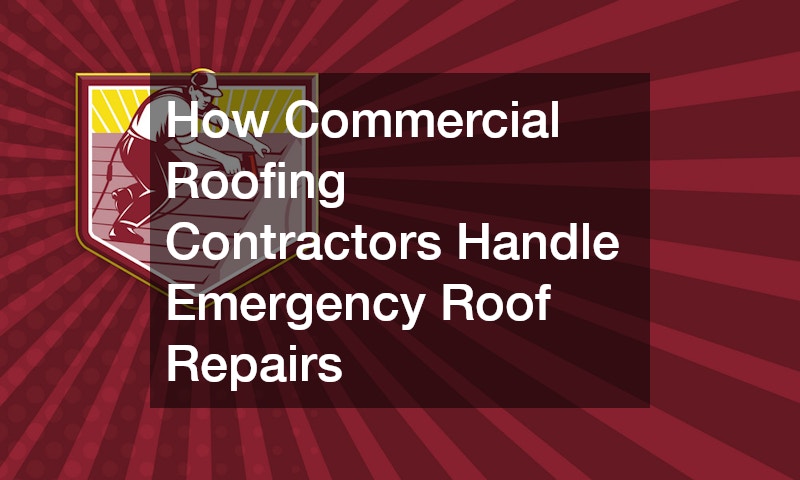
When disaster strikes, the roof over your business may be the first line of defense. A well-functioning roof protects your assets, employees, and customers. However, emergencies don’t give notice, and immediate action is often required to mitigate damage. In this article, we will explore the significance of prompt emergency roof repairs, the common causes leading to such situations, the methods used by contractors to assess damage, the repair techniques employed, and how businesses can prepare for potential roofing emergencies.
Roofing emergencies can arise from various factors that compromise the integrity of a roof. Severe weather conditions, such as heavy rain, hail, snow, and high winds, are common culprits.
Video Source
Each of these elements can lead to immediate roof damage, necessitating quick intervention to prevent further complications.
In addition to weather-related events, unexpected occurrences like falling trees or debris could pose significant risks to roofs, resulting in punctures or structural damage. Such incidents happen without warning and require instant repair to restore safety and functionality to the affected area.
Lastly, gradual wear and tear, exacerbated by lack of regular maintenance, can lead to vulnerabilities on the roof. Leaks or weakened areas may not be evident until it's too late, turning an ordinary rainy day into a crisis that requires urgent repairs.
When a roofing emergency occurs, the first step for contractors is to conduct a thorough assessment of the damage. This typically involves a systematic inspection to identify visible signs of distress, such as sagging, leaks, or missing shingles. Safety is paramount during this phase, and contractors prioritize secure access to the roofing system.
High-resolution photography and drones are increasingly used to get a comprehensive view of the roof without risking personnel safety. These tools provide crucial data that contractors rely on when determining the extent of the damage and which areas require immediate attention.
Once they assess the visible damage, contractors often evaluate the underlying structures, checking for rot or mold that could signal deeper issues. This multi-faceted approach ensures that all potential problems are addressed immediately, preventing further complications in the future.
Commercial roofing contractors employ a variety of repair techniques tailored to the specific issues at hand. One common approach is temporary tarping, which acts as a quick protective measure against further water intrusion until permanent repairs can be made. This technique is especially useful during severe weather conditions when immediate shelter is crucial.
Another widely used method includes patching leaks with appropriate roofing materials, be it shingles, rubber, or metal flashing. Contractors choose their repair materials based on the roof type and the extent of the damage, ensuring compatibility and longevity in the fix.
In some severe cases, contractors may opt for complete section replacement if the damage is beyond repair. This is often more effective in the long run, as it replaces compromised materials with fresh, durable options that are less susceptible to future emergencies.
Preparation is key for businesses to mitigate the impact of potential roofing emergencies. Regular maintenance checks play a significant role in identifying minor issues before they escalate. Establishing a routine inspection schedule helps in recognizing vulnerabilities and allows timely repairs to be implemented, reducing the risk of costly damage and operational disruptions.
Moreover, businesses should consider creating an emergency response plan that outlines procedures to follow in case a roofing emergency occurs. This plan could include emergency contacts for roofing contractors, a checklist to minimize damage during adverse conditions, and designated staff responsibilities to ensure swift action.
Investing in proper roof insurance is also crucial in helping businesses brace for emergencies. Insurance not only aids in covering repair costs but also provides peace of mind, knowing that financial support is readily available if disaster strikes, allowing companies to recover quickly and continue operations with minimal downtime.
The importance of quick and effective emergency roof repairs cannot be overstated. Understanding common causes of roofing emergencies, how contractors assess damage, the repair techniques employed, and the strategies businesses can use for preparedness all play pivotal roles in managing potential crises. Relying on professional contractors ensures that businesses receive the quality services needed to restore their roofs promptly, safeguarding their investments.
